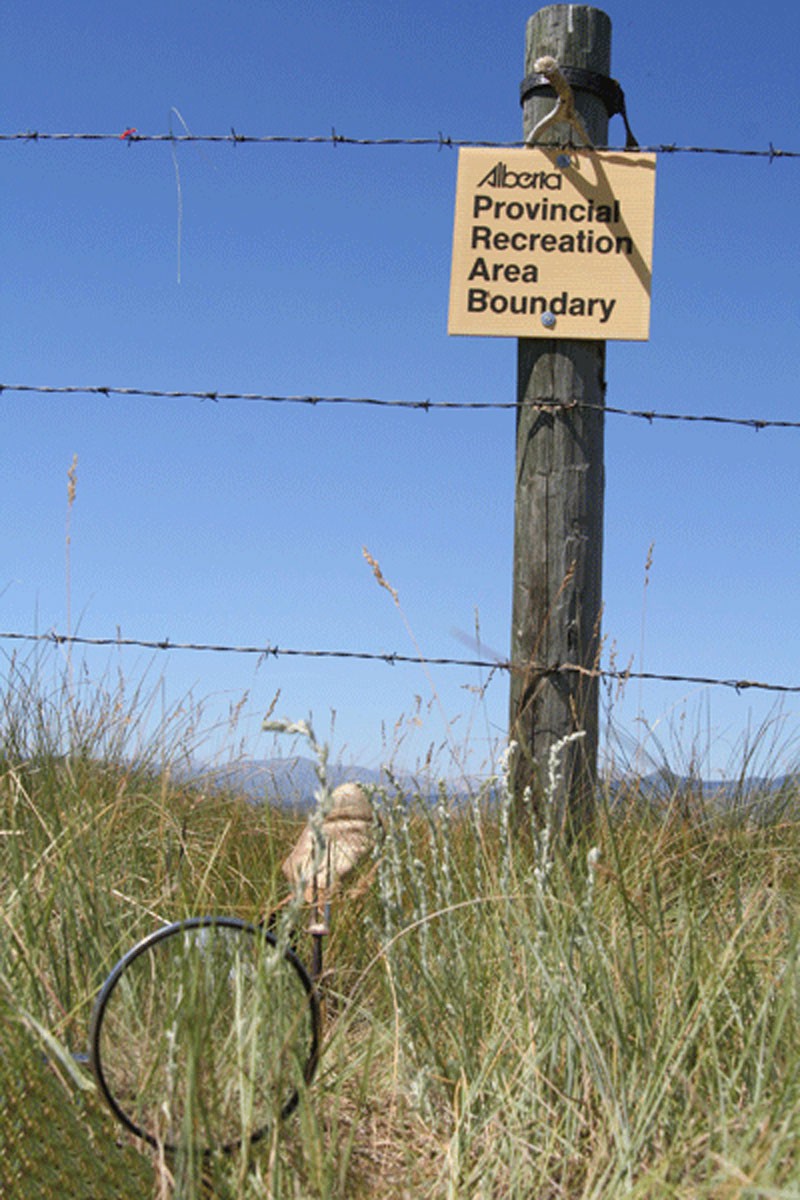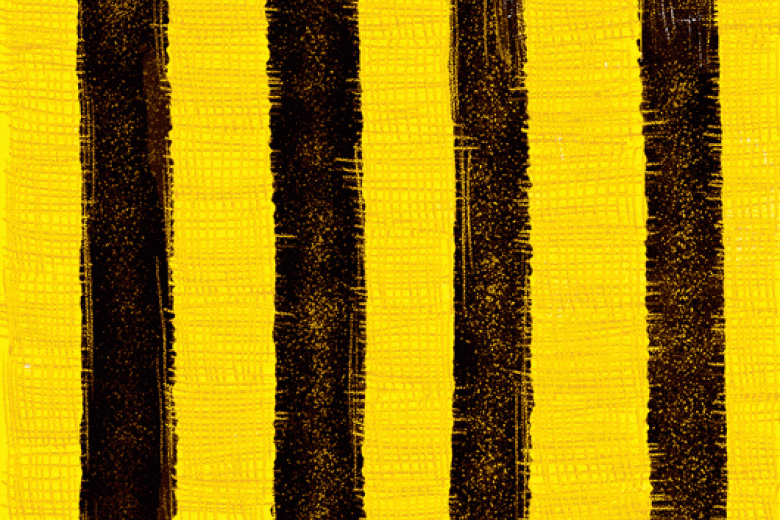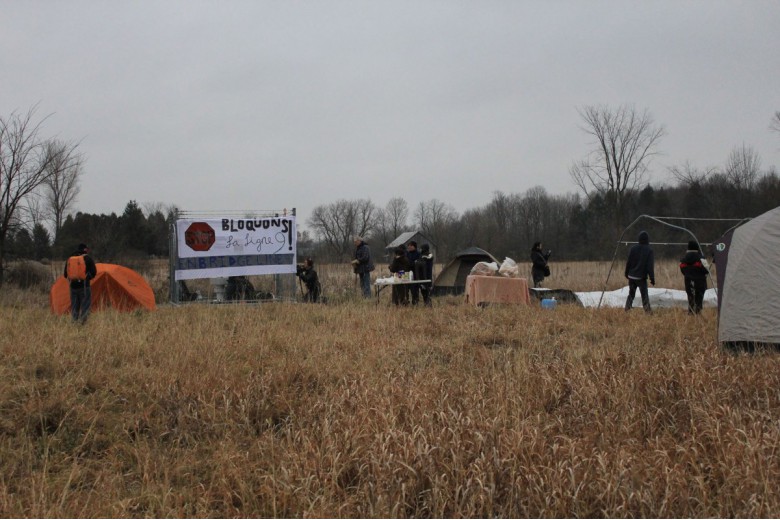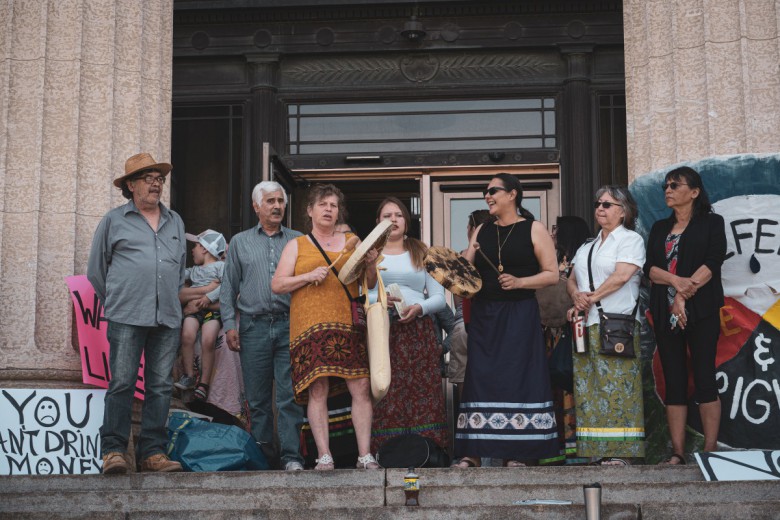
Aeolian: borne or produced by the wind. (Canadian Oxford Dictionary)
“At first glance, the landscape appeared so beautiful and pristine. With time, thin dark strings of colour began to appear. And with that came the memory of the warrior’s words – “you guys brought the fences.” Indeed, the dark lines were everywhere so that, in time, it became impossible to see anything else.”
— arbi environmental intervention documentation, you guys brought the fences, Stone House Artists’ Retreat, Lundbreck, Alberta, summer 2007.
Barbed wire fences are ubiquitous on the prairie landscape. They symbolize domination of the land, ownership, entitlement and control. Wire fences are a western settlement paradigm that was brought to North America by settlers and land surveyors who sought to tame the limitless territory with mathematical delineations of latitude and longitude and monetary measures of land value. Barriers were needed to keep in livestock and to keep out trespassers.
And so it is that the prairie horizon was reduced to lines of barbed wire and wooden posts fading into infinity.The Aeolian Recreational Boundary Institute (arbi), an artist collective headquartered in Calgary, Alberta, emerged in early 2009 to facilitate ongoing study into borders, boundaries and all forms of barriers that act as disruptive forces in the natural world. The institute works with organizations involved in the remediation of the negative impact that some forms of human intervention have had on existing ecosystems. As a neutral, non-aligned and apolitical entity, arbi has the freedom to collaborate with a wide variety of groups, often with competing interests, providing them with volunteer labour. Direct participation in the activities of these groups allows arbi’s members to gain an intimate, front-line perspective and serves to further their understanding of the effects that man-made barriers have on nature.
In May 2009, arbi’s digital art installation you guys brought the fences was exhibited briefly in Philadelphia at the Stella Elkins Tyler Gallery of the Tyler School of Art. In the summer of 2009, arbi took advantage of opportunities to work in the field with conservationists from the Nature Conservancy of Canada to help remove fences and structures from conservation areas where free-ranging animals needed continuous migration corridors. These collaborations allowed arbi members to contribute meaningful volunteer labour spooling wire, pulling fence posts and dismantling windbreak fences and other abandoned structures while exploring the aesthetic implications of the work of restoring the land to its natural state.
In Waterton, Alberta, arbi erected a temporary structure of discarded wood materials – from the day’s labour of tearing down sheds and windbreak fences – as an artistic meditation on the picturesque landscape of plains meeting mountains. After the viewing, the found-object sculpture was collapsed and piled with the other discarded materials to be removed or burned by the landowner, who had negotiated a conservation covenant with the Nature Conservancy of Canada.
Pronghorn Emancipation Project 2010
The pronghorn antelope is the fastest land mammal in North America – second in the world to the cheetah. It can attain speeds of over 86 kilometres per hour. arbi’s interest in the pronghorn originated with the awareness of the negative effects that barriers, particularly barbed wire, have on its traditional migration pattern from the Midwestern United States into the prairie region of eastern Alberta and western Saskatchewan.
Standing at about a metre high at the shoulders, pronghorns lack the ability to jump fences. The pronghorn’s only way to navigate fences is to scoot underneath the bottom strand of wire. The barbs on the wire can inflict serious injuries to the pronghorn’s back, tearing out fur and ripping the skin, sometimes resulting in fatal injuries from infected wounds.
Several projects have been initiated by conservation groups in the U.S. and in Canada to replace the bottom strand of barbed wire on boundary fencing with double-strand smooth wire, strung 18 inches from the ground. This simple and elegant solution is helping the pronghorn to safely pass under fences on their traditional migration routes, which have been used for centuries if not millennia. Meanwhile, other barriers – roads, gas and oil drilling sites, residential and industrial developments – continue to threaten the existence of the pronghorn.
The summer of 2010 will see arbi collaborating with conservationists to replace barbed wire with smooth wire on ranchland fences. These activities will provide the institute with first-hand knowledge of the extensive cross-border pronghorn migration routes in southern Alberta and will help arbi bring more awareness to the plight of these speedy mammals.
Direct participation in projects initiated by other organizations will continue to be a mainstay of arbi’s activities. It is hoped that the institute’s presence will have a positive impact and result in better understanding of the issues surrounding man-made boundaries, borders and barriers and how they influence the natural world.






